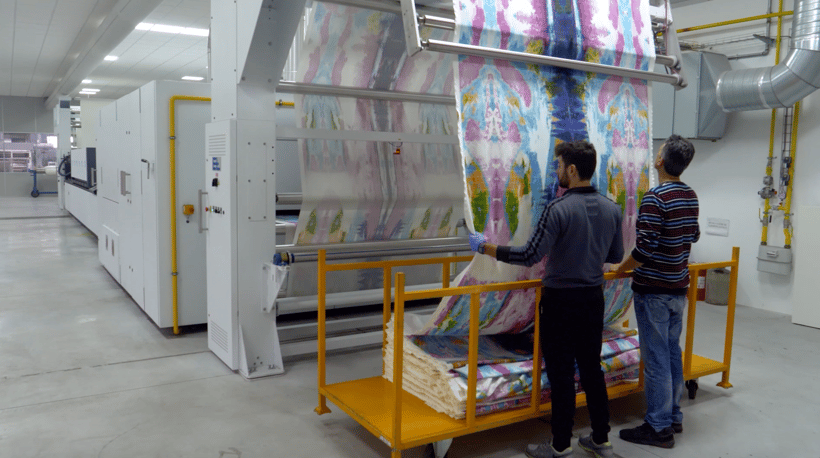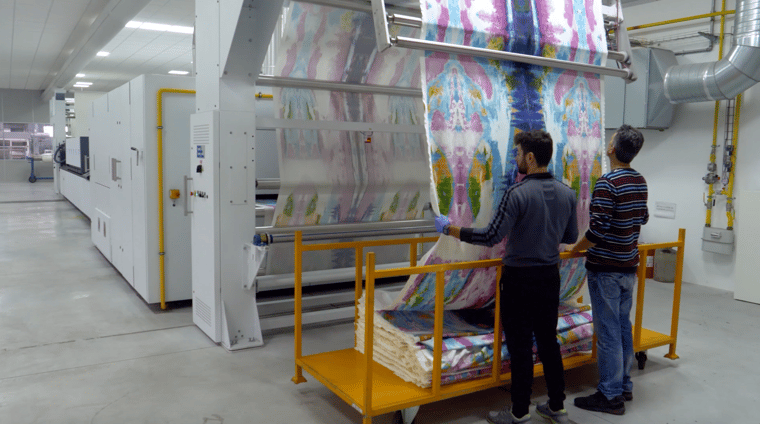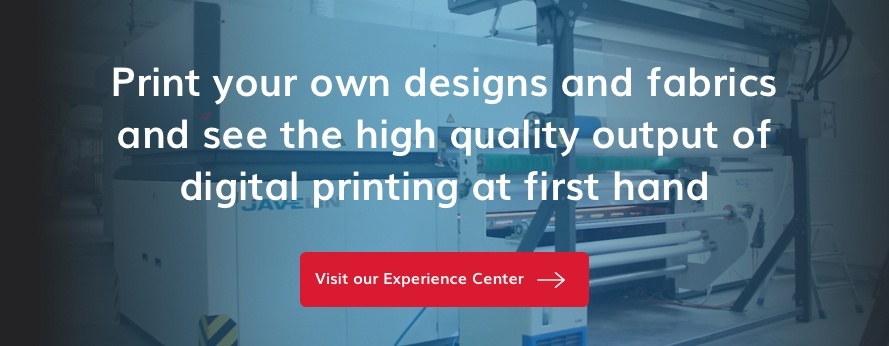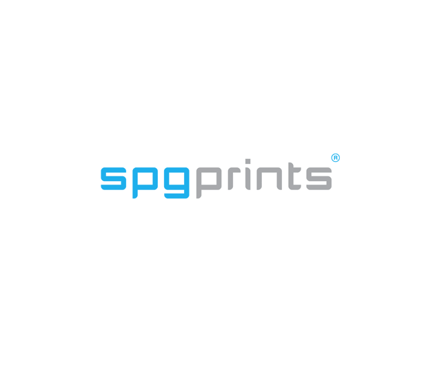Are you considering the transition to digital textile printing? This modern printing method can bring a lot of benefits to your company, but the required investment of digital textile printing is one of the main reasons printers can be hesitant in making the transition.
Digital fabric printing: the investment costs
Digital textile printing machines require a higher investment than conventional printing machines. When comparing the total cost of ownership (water, energy, operators, service costs, ink, post-treatment of the fabric, etcetera) between conventional printing and digital printing, printing one meter of fabric with digital fabric printing costs around 1,5 times more than with conventional printing.
For this blog, I zoom in on the investment costs first. There are multiple factors that determine the investment costs of a certain textile printing machine. The additional digital fabric printing cost depends on:
-
The digital printing technique
In digital textile printing, there are two different kinds of printing techniques available: multi-pass scanning printing and single-pass printing. Multi-pass scanning textile printing means that the print heads move from left to right over the substrate (hence the name 'scanning'). For multi-pass scanning printing, only a few print heads are needed to get the desired outcome. This reduces the digital fabric printing cost of a multi-pass printer.
Single-pass printing is a newer printing technique that enables faster printing at a higher quality. However, to enable faster printing, more print heads are required. Print heads are expensive components; the more print heads the printer has, the more expensive the printer will be. Therefore, single-pass printing is more expensive than multi-pass printing.
A third option, Digital Sublimation Printing, is used for printing the design via transfer paper on the substrate. This is possible for both single-pass and multi-pass printing. Digital Sublimation Printing is seen as one of the most future-proof printing processes. In our Webinar On-Demand, our experts explain why.
-
The type of printing ink
Digital textile printing machines require the use of a different type of ink. In digital textile printing, the ink is printed onto the substrate by numerous tiny nozzles inside a print head. This printing process requires the use of ink with a higher runability to prevent nozzle blockages and print head failures.
On top of that, digital textile printing enables high-quality printing when ink with a large color gamut is used. They also need to be extremely pure to prevent corrosion to the heads. This means an extra purification step is essential in the production. Because of these special characteristics, digital inks are more expensive than inks for conventional printing and therefore increase the digital fabric printing cost.

Earnings of digital textile printing
Against the aforementioned digital fabric printing costs, digital textile printers offer a number of valuable advantages that help save costs or generate new income.
-
Lower labor costs
Conventional printers have to be handled by several operators, because of the many manual tasks that have to be performed during the printing process. As a result, conventional printing involves high labor costs. On the other hand, digital textile printing machines are almost entirely automated, which means only one or two operators have to be present to handle the machine. This number goes down to less than one operator per machine if you run multiple machines, as operators can run more than one machine simultaneously. Therefore, making the transition to digital textile printing can help printers save on labor and thus digital fabric printing cost.
-
No screen engraving costs
In digital textile printing, a digital design is printed directly on fabric. No rotary screens are needed. Not only does this save valuable engraving time, but printers also spare the additional costs of the screens themselves.
-
A longer lifespan of print heads
SPGPrints’ digital textile printers are equipped with the Archer technology, which reduces print head damage by positioning the print heads further away from the substrate. For this reason, the Archer+ technology helps you to extend the lifespan of the print heads and save on repair costs. Since print heads are one of the most expensive parts of a digital printing machine, extending its lifespan can save printers a substantial amount of money over a period of time.
-
A shorter turnaround time
With the help of digital textile printing, printers can increase their production rate and shorten their turnaround time. This enables printers to ensure faster delivery and keep up with their customers' demands, but also take on more printing jobs. It has been proven by digital textile printers that serve fast fashion brands, that those brands are willing to pay more for a meter of fabric when it is delivered in a few days instead of a few weeks. This means the additional digital fabric printing cost can be charged to your customer to a large extend.
-
Printing what is sold instead of selling what has been printed
Because of the long turnaround time of conventional printing, fashion brands need to estimate the meters of fabric they will sell and base their printing job on this estimate. However, since digital textile printing accelerates the printing process, it enables fashion brands to print small batches and place repeat orders when a certain type of clothing is selling very well.
-
A decrease in ink usage
Although digital ink is more expensive than the ink used for conventional printing, the digital printing process - and the Archer+ technology in particular - helps printing companies to decrease their ink usage. The ink usage of the Archer+ technology is 20 percent lower than other printing technologies. This way, your ink usage is reduced and your digital fabric printing cost will be lower.
Experience the true power of digital textile printing
I understand seeing a technique with your own eyes is more convincing than reading about digital fabric printing cost and earnings. That's why I want to offer you the possibility to experience digital textile printing in real life. You can schedule a visit to our Experience Center here.
In our Experience Center you get the opportunity to:
- See the PIKE and JAVELIN digital textile printers in action
- Print your own designs and fabrics
- Witness our digital printer's high-quality output at first hand
If you're interested in digital sublimation printing, our experts can create a Personal Sample to see how your product is printed with this technique. Request your own sample here.
Hopefully, we meet each other soon!






